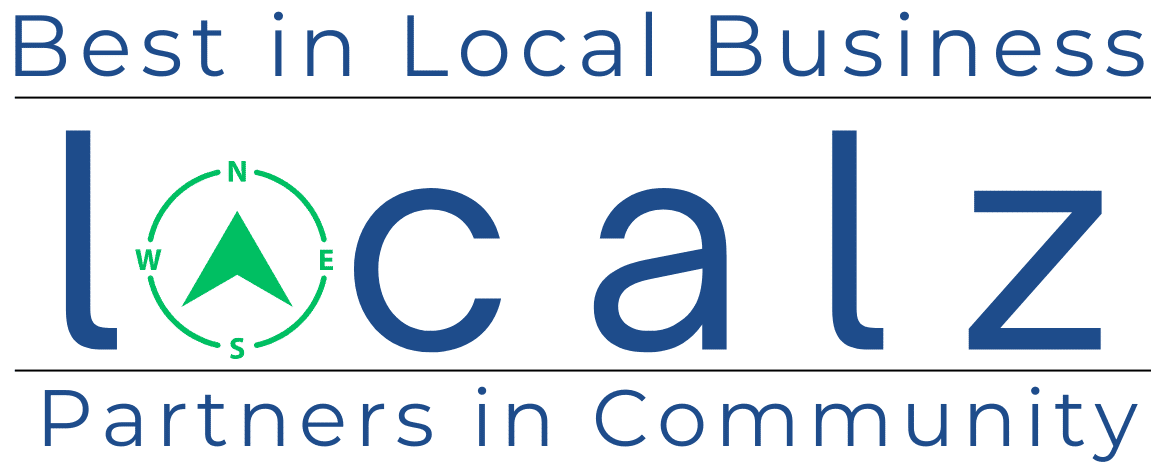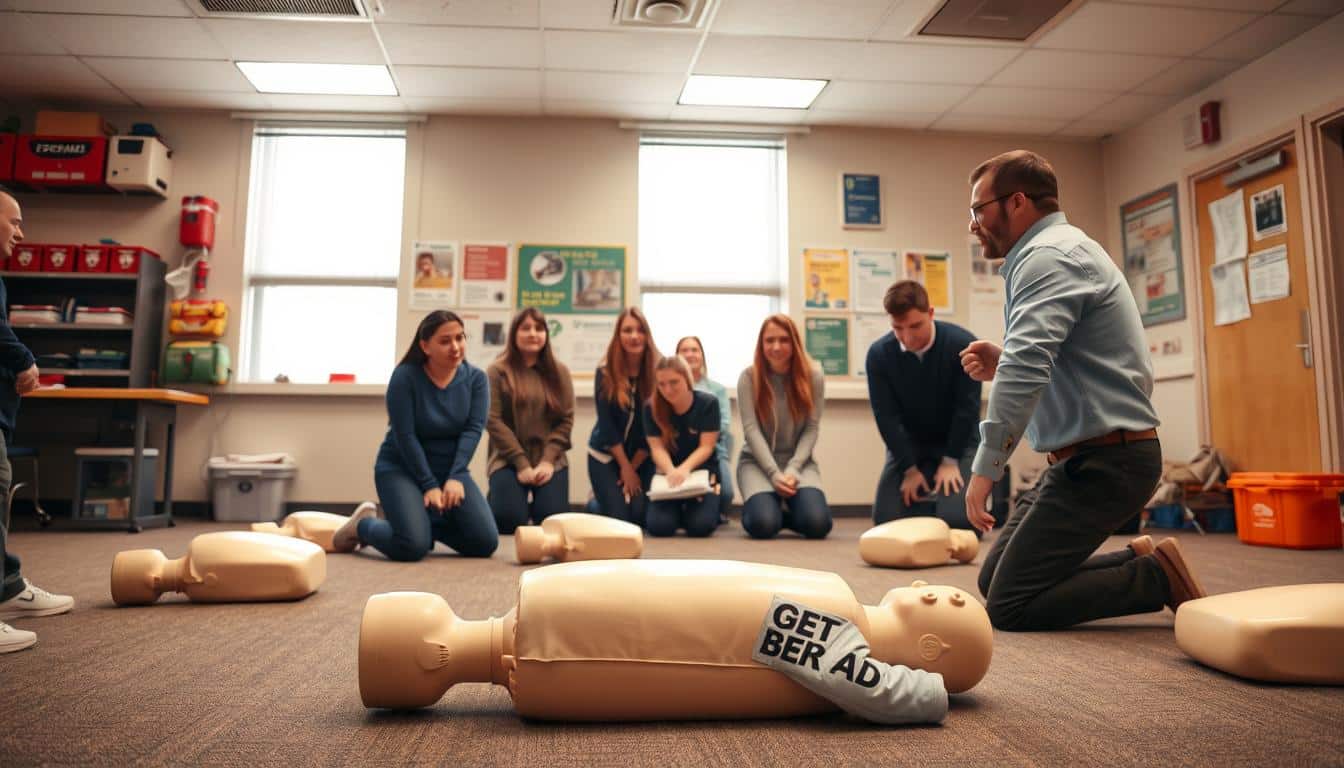Have you ever thought about how fast you could act in a crisis? CPR Classes are key to keeping our communities safe. They give you the CPR certification and the skills to respond in emergencies. Knowing CPR can save lives by keeping blood flowing and air moving until help arrives.
This section will explore why CPR training is so important. It’s not just for parents or professionals. It’s for anyone who wants to be ready to help in an emergency.
Key Takeaways
- CPR Classes are vital for building community safety and preparedness.
- Certification in CPR increases confidence during emergency situations.
- Understanding CPR can significantly improve survival rates in cardiac arrest cases.
- Emergency response training is essential for all individuals, regardless of profession.
- Currently, many local resources offer accessible CPR certification courses.
- Engaging in CPR training fosters a culture of safety and response.
The Importance of CPR Training
CPR training is key in today’s world. Cardiopulmonary Resuscitation (CPR) keeps blood flowing and oxygen in the body during emergencies. Knowing CPR can save lives. Councils emphasize the need to know when to use CPR.
Understanding Cardiopulmonary Resuscitation
CPR training teaches chest compressions and rescue breaths. These steps keep blood flowing when the heart stops or breathing is hard. Learning CPR helps keep oxygen to vital organs until help arrives.
Life-Saving Techniques
Good CPR follows clear steps. Doing chest compressions right can save lives. CPR training teaches how to keep an airway open and where to place hands.
Practicing these steps makes you ready for emergencies. It gives you the confidence to act fast when needed.
When to Call for Help
Knowing when to call for help is vital. Signs like not responding, odd breathing, or heart failure mean it’s time to act. CPR training teaches when to call emergency services, helping save lives in urgent situations.
Finding Certified CPR Classes Near You
Looking for certified CPR classes can make you ready for emergencies. Use local resources and directories like LocalZ to find them. By searching for CPR classes near you, you can find training that fits your schedule and location.
There are many local listings to choose from. This means you can pick reputable instructors for a good learning experience.
Local Resources and Listings
Local organizations offer CPR courses for community members. Search online for certified CPR classes in your area. These classes vary, so you can find one that suits you.
Being affiliated with local health departments adds to the credibility of these courses.
Online Search Tips
Online platforms make finding CPR certification easy. Use keywords like “certified CPR classes” or “CPR classes near me” to find options. Look at educational institutions, community centers, and healthcare facilities for CPR training.
Filtering search results by user ratings can give you insights into the quality of training.
Customer Reviews and Experiences
Reading customer reviews is a smart way to choose a CPR class. Feedback from others shows what’s good and bad about different classes. Look for reviews that praise the instructor and the class structure.
Many positive reviews mean the class is likely of high quality. For more, check out community initiatives that teach these important skills.
Types of CPR Classes Available
Different CPR classes meet various needs based on age and profession. It’s important to know which one is right for you. This ensures you get the right training to handle emergencies well.
Adult CPR Classes
Adult CPR classes teach skills for people 12 and older. They cover essential techniques like chest compressions and rescue breaths. These are key for handling adult cardiac arrests.
Students learn the latest methods and guidelines. This helps them stay effective in real emergencies.
Pediatric CPR Classes
Pediatric CPR classes focus on infants and children. The techniques are different from adult CPR, tailored for smaller bodies. They teach caregivers, parents, and professionals how to act fast in emergencies.
Specialized Training for Professionals
Specialized CPR training is for professionals like healthcare workers and teachers. These courses address unique challenges in their fields. They make sure participants are ready for any emergency.
By focusing on specific needs, these courses boost preparedness and response skills.

Benefits of Taking CPR Classes
Learning CPR offers many benefits beyond just knowing how to do it. People who know CPR feel more confident in emergencies. They can act quickly, which could save lives. This training also helps not just the person who learns it, but also their friends and family.
Gaining Confidence in Emergency Situations
One big plus of CPR classes is feeling more confident in emergencies. Knowing how to handle heart problems helps people stay calm under stress. This calmness makes them more likely to help, which can save lives.
Enhancing Workplace Safety
Having CPR-trained workers makes workplaces safer. They can follow important safety steps that reduce risks. This creates a safer work environment, encouraging everyone to support health and safety efforts.
Building Community Preparedness
When more people know CPR, communities become safer. Knowing CPR means neighbors can help each other in emergencies. This shows how important it is to be ready and watchful for everyone’s safety.
What to Expect in a CPR Class
Attending a CPR class is a full experience. You’ll learn both theory and practical skills. The class includes lectures, demos, and hands-on practice. This mix helps you feel ready to act in emergencies.
Overview of Class Structure
A CPR class is set up to help you learn and remember. First, you’ll learn the basics through videos and slides. Then, you’ll practice on manikins to really get it.
Hands-On Practice Sessions
Practicing CPR is key. You’ll do chest compressions and rescue breaths. Certified teachers watch and guide you, helping you get it right.
Certification Process
After finishing the class, you get certified. This means you’ve shown you can do CPR well. You’ll get a card that proves you’re ready to save lives.
How to Choose the Right CPR Class
Choosing a CPR class needs careful thought. Look at instructor credentials first. They show the instructor’s skill and teaching quality. Certified instructors are key for good training.
Evaluating Instructor Credentials
Instructor credentials are very important. Look for certifications from groups like the American Heart Association or the Red Cross. Knowing the instructor’s background helps ensure you get accurate training.
Class Size and Atmosphere
Class size matters a lot. Smaller classes offer more personal attention. This makes learning better and more interactive.
Course Availability and Scheduling
It’s important to find a class that fits your schedule. Many places offer classes at different times. This makes it easier to get trained in CPR.

LocalZ: Your Go-To Directory for CPR Classes
The LocalZ directory is a key resource for CPR training. It connects you with local experts, making it easy to find qualified instructors. This platform helps you find CPR classes that fit your needs.
How LocalZ Connects You to Local Experts
LocalZ makes it easy to find CPR classes near you. It has a huge list of certified trainers in your area. This helps you get the training you need and supports local businesses focused on health and safety.
Exploring Listings in Your Area
Exploring CPR classes on LocalZ is easy. The site lets you compare different classes and instructors. This makes it simple to find the right training without any trouble.
The Convenience of Online Booking
LocalZ makes booking CPR classes easy with online booking. You can reserve your spot without any extra steps. This saves time and encourages more people to get trained.
Supporting Your Community Through LocalZ
LocalZ is all about making communities better. They do this by supporting local groups with a big part of their earnings. This way, they help local businesses and groups work together, boosting the local economy.
By teaming up, LocalZ helps local businesses and groups get better resources. They also build stronger support networks. This approach connects local businesses with important community services, focusing on safety and well-being.
This model helps businesses by bringing in more customers. It also helps local development by using the earnings for community projects.
Frequently Asked Questions About CPR Classes
Many people have questions about CPR classes. Knowing these answers can make your experience better. You don’t need to have any experience to join. The class lasts about two years, which is standard in the field.
Also, think about the cost of the class. Prices can change based on who is teaching and what you learn.
Do I Need Prior Experience?
No, you don’t need any experience to take CPR classes. They are made for people who are new to CPR. You’ll learn everything you need to know to help someone in an emergency.
Instructors will teach you the important skills and ideas. This way, you’ll feel ready to act in a crisis.
How Long Does Certification Last?
CPR certification usually lasts two years. After that, you need to get it renewed. This keeps you up-to-date with the latest CPR methods and rules.
What Are the Costs Involved?
The cost of CPR classes can differ a lot. It depends on how long the class is, what kind of certification you get, and what materials you need. Look around to find a class that fits your budget and meets your needs.

Real-Life Success Stories
Real-life stories show how CPR training can save lives and give people confidence. These stories talk about the skills learned and the courage gained to act in emergencies. Students share moments where their training made a big difference.
Testimonials from Recent Students
Many people thank CPR classes for saving their lives. They say the training gave them the skills to act when it counted. Students talk about how their fears turned to courage, saving lives.
Case Studies of Lives Saved
Many case studies show CPR training’s role in saving lives. Each story is a testament to the power of training. They show how training can save lives and strengthen communities.
Community Impact Through Training
CPR training makes communities stronger. It empowers people with skills, making everyone safer. These stories inspire others to help, making communities ready for emergencies.
Conclusion: Invest in Your Safety and Community
Getting CPR training is a big step for community safety. It helps people learn skills to save lives. When more people know CPR, everyone in the community is safer.
Taking the First Step Toward Training
Choosing to take a CPR class is a big step. You learn how to act in emergencies. This training gives you the power to save lives when it counts.
The Ripple Effect of CPR Knowledge
CPR classes spread knowledge and help communities. More people knowing CPR means quicker help in emergencies. This makes everyone feel safer and more secure.
Encouraging Others to Get Involved
Getting friends and family to take CPR training helps a lot. Sharing your experience encourages others to do the same. This way, communities become stronger and safer for everyone.
Get Started Today with LocalZ
LocalZ makes it easy to learn CPR online. You can find CPR classes near you quickly. This helps you feel ready to help in emergencies.
Search for CPR Classes Now
Just a few clicks and you’re on your way with LocalZ. You can find CPR classes for adults and kids. It’s a great way to make your community safer.
Join the Community Initiative
Joining the CPR initiative is more than learning CPR. It’s about connecting with your community. Together, we make our public spaces safer and healthier.
Find Local Businesses and Make a Difference
LocalZ also helps you find local businesses that support safety. By choosing them, you help your economy and community. We all work together to make our place safer.

